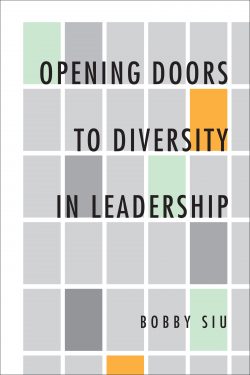

Columns/Blogs
Features
Diversity & Inclusion
Managing/Leadership
Considering blind spots in leadership and HR management
By Bobby Siu
The raging of the social justice movement through Black Lives Matter, Indigenous decolonization and anti-Asian hate demonstrations has brought the issue of racial discrimination to a higher profile.
Adding to the momentum are the research findings and outcries from the health-care and community sectors on how the spread of COVID-19 has disproportionately and negatively impacted neighbourhoods with higher concentration of racialized minorities, which consequently accelerates their hospitalization and death rates.
In the midst of it all is the increased awareness of human resources (HR) professionals of the lack of diversity, equity and inclusiveness in the workplace.
Lately — along with their CEOs, executives, and sometimes board directors — these professionals have put their heads together and tried to find ways to make their organizations more equitable, diverse and inclusive. With these concerted efforts, some progress should be made in a matter of time.
Or, maybe not.
Not much progress – why?
For people who have worked in the social justice field for a while, one glaring observation is that the representation numbers in diversity and the reduction of biases that we seek do not move in linear progression.
In fact, some corporations have been in this venture for a few decades, and still, there has been little progress; diversity statistics still endure “ups and downs.”
One often scratches the head and exclaims aloud: “Why?”
One answer to this question is that there are blind spots in HR and leadership. Without recognizing and acknowledging them, it is hard to make much headway in diversity, equity and inclusiveness.
Let’s continue this conversation by highlighting three blind spots:
Narrow concept of leadership: We seldom examine the concept of leadership.
In identifying and selecting successful candidates for leadership positions — that is, board directors and executives — we often take for granted that the leadership qualities identified in leadership competency lists (such as strategic, reputational, influential, and experienced) are the most appropriate ones, without asking deeper questions.
- Are these really leadership competencies?
- Do other people see these competencies as necessary?
- Do all leaders have all these competencies?
- Are leaders with these competencies viewed by diverse groups as high quality leaders?
Unchallenged merit principle: We seldom challenge the concept of merit principle. In HR management, meritocracy rules.
We have been using that principle for decades. In fact, no one dares to challenge “merit” as the hiring and promotion principle in graduate schools or in workplaces.
According to the merit principle, leaders are on the top of an organization because they have merits, and people at the lower level have lesser merit. We do not realize that such argument is tautological. It does not explain why leaders are chosen as leaders.
‘Bad apples’: We seldom see racism as systemic.
We tend to view racism as a manifestation of personal biases or discriminatory conducts, and not embedded in the corporate culture or HR policies, programs, procedures and practices, formal or informal.
Hence the saying that “there are bad applies in the system,” as opposed to “the system is rotten at its core.” Racism is individualized. Getting rid of “bad apples” is easier than changing the HR system.
Time for action
These are blind spots in leadership search and HR management. We have to acknowledge them and start removing them.
When we do not question the narrow concept of leadership, the meaningless merit principle, and the individualized concept of racism, we negate alternative ways of choosing future leaders, of broadening the composition of leaders, and of removing systemic barriers for diverse groups.
Our blind spots obscure the clear path to diversity, equity and inclusiveness.
We’ve skipped doing our homework and reflecting critically on our paradigms of thoughts. We often make incorrect assumptions on people and HR policies and mechanisms, and jump straight to providing solutions — often half-baked — without much evidence to back up.
Hence, our work in diversity, equity and inclusiveness has many false starts and not much long-term impacts. We often walk one step forwards, and one or two steps backwards.
We have been in this “yo-yo” mode for a while; it is time to change our course and get rid of our blind spots.
 Bobby Siu is the author of Opening Doors to Diversity in Leadership.
Bobby Siu is the author of Opening Doors to Diversity in Leadership.
Print this page
